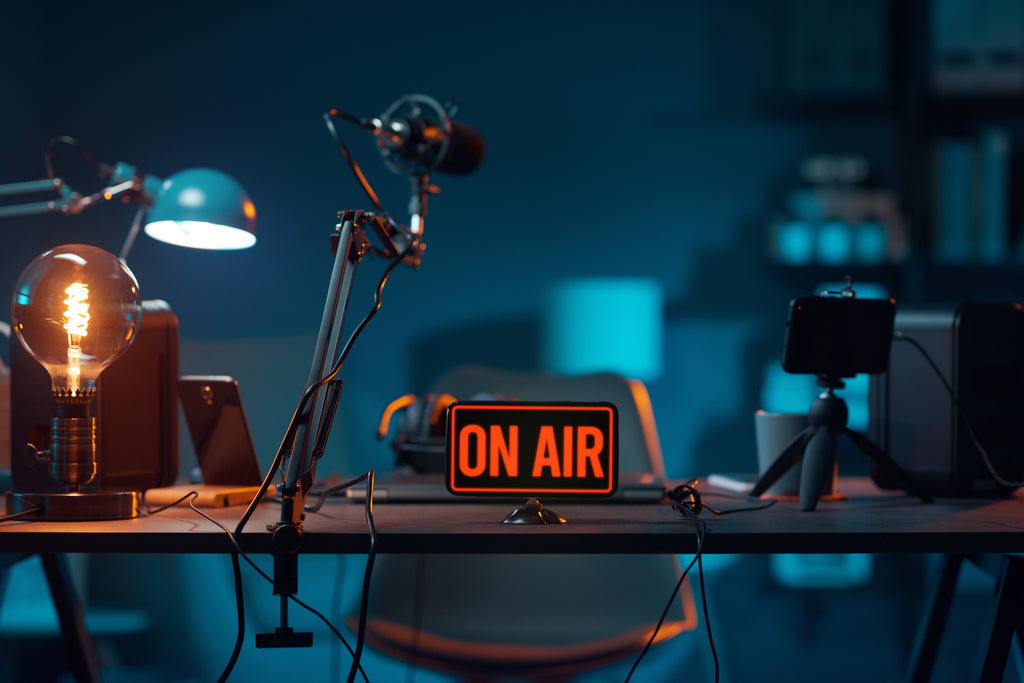Starting a podcast
We dive into the realm of Podcasts and how you...
In this article, we go through the steps to starting a podcast, from planning, formatting, recording, editing and publishing. By the end, you’ll have an idea of how to start your podcast.
If you’re planning to start a podcast, there are a few things you need to keep in mind. First, decide what your podcast will be about.
- What is the theme of your podcast?
- What topics will you cover?
- Who is your target audience?
- Do you have access to guests or experts to join you?

The next step is to choose a format for your podcast. Will it be in an interview format? A discussion? Once you’ve decided on the format, it’s time to start planning your episodes. In each episode, try to focus on one main topic. This will help to keep your content focused and engaging.
Before you can start broadcasting, you’ll need to gather some essential equipment. Firstly, you’ll need a laptop or PC and a microphone. This can be either a standalone microphone or one that is built into your computer. If you’re planning on recording high-quality audio, it’s worth investing in a microphone.
There are two main types of microphone connections: USB and XLR. USB microphones are typically used with computers, while XLR microphones are used with professional audio equipment. Each type of connection has its own advantages and disadvantages.

USB microphones are typically less expensive than XLR microphones and are easy to connect to a computer without any additional equipment. However, they can be more prone to interference from other electronic devices, and the quality of the sound may not be as good as an XLR microphone.
XLR microphones require an audio interface or mixer in order to connect to a computer, but they provide better sound quality and are less likely to experience interference. They also tend to be more expensive than USB microphones.
Another tip for improving audio is using our #influencer boom arm microphone holder with pop filter. This gives you the flexibility to move the microphone into a comfortable position and the pop filter reduces the peeks of your speech to make the audio more balanced and easier to hear.

Your environment also matters when recording audio. Ideally, you’d record your podcast in a room with little to no echo or background noise. To combat this, you can invest in foam sound deadeners that attach to your walls.
Next, you’ll need some software to record and edit your podcast. You’ll need this software to add your intro/outros, remove the bad jokes, awkward pauses and the Ums-Ahs to make the content more palatable. Many different software programs are available, so it’s worth researching to find one that suits your needs.
Now you have the microphone, laptop and editing software; you’re ready to hit record. But that’s where scripting comes in. This may seem daunting, but it’s not as difficult as you might think. The key is having a clear idea of what you want to say before recording. Once you’ve done that, the rest will come naturally. Here are a few tips to help you get started:

- Decide on your topic and focus. What is your podcast about? What do you want to share with your audience? Keep these things in mind as you write your script.
- Structure your podcast episode. Just like with any other piece of writing, it helps to have an introduction, body, and conclusion for your podcast episode. This will give your podcast some structure and flow.
- Write conversationally. This is perhaps the most important tip for scripting a podcast episode. Remember that you’re having a conversation with your listeners, so write in a natural and conversational way. Avoid long, dense paragraphs of text - instead, focus on shorter sentences and an informal tone.
- Edit and revise as needed. Once you’ve written your script, take some time to edit it and make sure it sounds the way you want it to. Then, when you’re happy with the final product, record your podcast episode and share it with the world!
You’re about to hit the record button, but one last tip we have is how to speak into the microphone. Remembering to speak clearly and projecting your voice is the most important thing. You may also want to experiment with different microphones and recording techniques to find what works best for you. Here are a few tips to help you get started:
- Start by testing the microphone to make sure it’s working properly.
- When you’re ready to start recording, sit or stand in a comfortable position. Relax your shoulders and take a deep breath.
- Begin speaking slowly and evenly. As you get more comfortable, you can increase your speed and volume.
- If you make a mistake, don’t worry! Just pause for a moment and start again.

You’ve recorded your podcast, but we need to clean it up. There are a few important things to keep in mind when editing a podcast. First, removing any dead air or pauses from the recording is essential. Dead air can make a podcast sound unpolished and break the story’s flow. Second, you’ll want to add intro and outro music to help set the podcast’s tone and provide a smooth transition between segments. Finally, if you include interviews in your podcast, you’ll need to edit out any awkward silences or stumbles. With a bit of practice, podcast editing can be a quick and easy process.


Back to Tips and Tricks